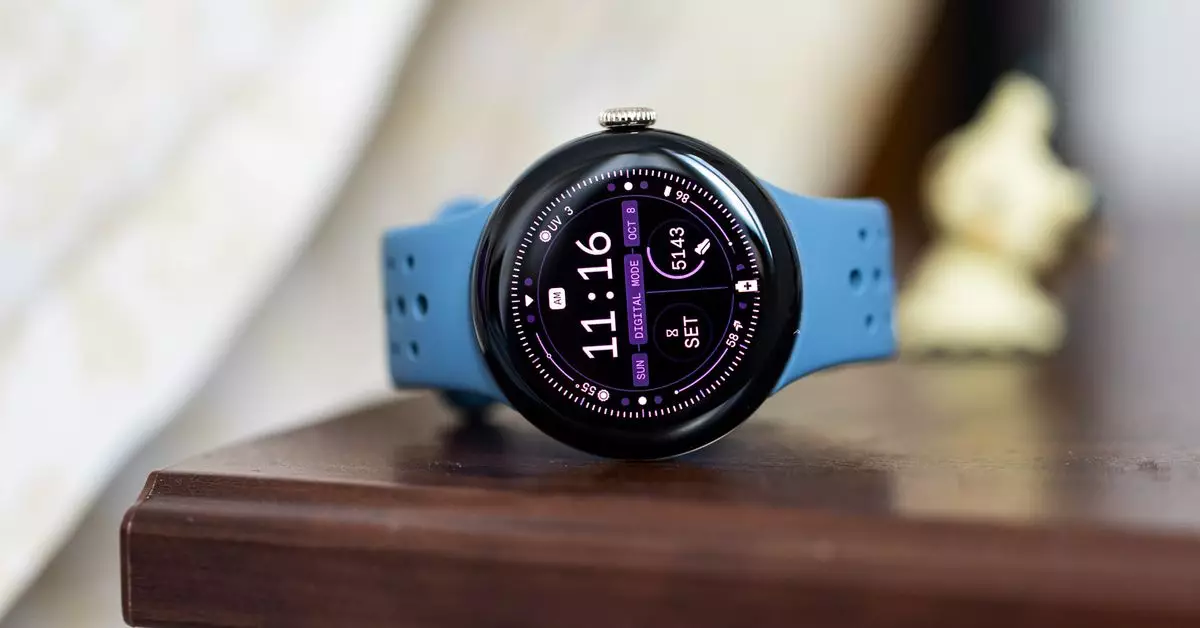Wearable technology has rapidly evolved over the past years, offering consumers various options that blend functionality with style. With major tech companies continuously churning out new products, discerning which device fits one’s needs can be a challenging endeavor. Google’s Pixel Watch lineup exemplifies this evolution, especially with the recently released Pixel Watch 3 promising to enhance the user experience. However, the previous model, the Pixel Watch 2, still holds its ground as a practical choice for consumers looking for value and performance. This article examines both models, highlighting their specifications, features, and pricing dynamics, which together shape the decision-making process for potential buyers.
The Pixel Watch 3 marks a significant refinement in Google’s smartwatch offerings, particularly with its upgraded features and design elements. Notably, it introduces a larger, brighter display with a new 44mm size that aims to enhance readability and usability. Among its refreshing capabilities is the incorporation of AI-generated workout suggestions, which personalizes fitness regimens based on the user’s preferences and past activities. Additionally, offline access to Google Maps significantly enriches the navigation experience, allowing users to explore without relying solely on their smartphones.
However, while the enhancements are appealing, the Pixel Watch 3’s starting price of $350 could be a dealbreaker for cost-sensitive consumers. Are the additional features worth the investment? With battery life generally averaging around 24 hours, it can be argued that the value proposition hinges on individual priorities regarding tech reliability versus price.
Despite being succeeded by the Pixel Watch 3, the Pixel Watch 2 maintains relevance in the wearable space, especially at its current starting price of $224—a compelling proposition, given the amount of features it offers. Adopting the same Qualcomm Snapdragon Wear W5 Gen 1 chip as its successor, the Pixel Watch 2 can still handle various tasks smoothly, enabling a seamless user experience.
The design remains attractive, boasting a 41mm size that is both stylish and functional. Interestingly, though it lacks the ultra-wideband technology found in the Pixel Watch 3, which offers features like unlocking Pixel devices and select vehicles, many users may find this omission inconsequential to their everyday lives. Most notably, the Watch 2 also supports Wear OS 5 and includes essential health monitoring features that are highly valued among users concerned with fitness.
When comparing the two models, one must take into account the specific features each offers. The Pixel Watch 3 does boast twice the brightness of the Pixel Watch 2, but for consumers who are not fitness aficionados or do not require the latest tech gimmicks, the older model may suffice. Furthermore, it has recently received updates that have diluted the feature gap between the two iterations.
In terms of battery life, the Pixel Watch 2 impresses with its reliability. Users can expect around 24 hours of performance even with the always-on display enabled, which many would consider adequate for a smartwatch. When factoring in the nearly $126 price difference between the two models, the value of a more affordable device becomes pronounced—especially if consumers prioritize core functionalities over the latest enhancements.
Current sales trends reflected on platforms like Amazon and Best Buy underscore a wider pattern of aggressive pricing strategies among tech retailers. Such competition allows consumers to grab solid deals on devices that otherwise might be considered overly expansive for their capabilities. For example, the recent significant markdown on the Pixel Watch 2 presents an opportunity for buyers seeking reliable technology without the financial strain.
The willingness of retailers like Amazon to discount new products substantially shortly after release, as seen with other tech products, demonstrates the industry’s ongoing fight for market share. This dynamic benefits consumers immensely as they can enjoy cutting-edge tech at more accessible prices, which also emphasizes the need for consumers to remain vigilant and informed about their purchasing decisions.
As the Pixel Watch series continues to evolve, prospective buyers must carefully assess what they value most in a smart wearable. While the Pixel Watch 3 undoubtedly brings an array of innovative features to the forefront, the Pixel Watch 2 nonetheless stands strong as a worthy alternative, offering commendable performance for a reduced price. By considering personal preferences, usage habits, and budget constraints, consumers can confidently navigate the wearable tech landscape to find the perfect fit for their lifestyle. Ultimately, whether opting for the latest model or the previous version, the selection should align with long-term satisfaction and practical utility.

